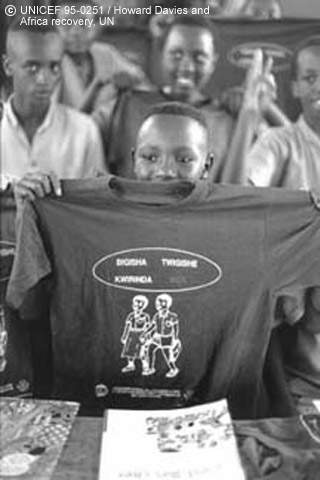|
|  |

|
| link to WHO |
International Initiatives to Combat HIV/AIDS in Uganda
Who is Who in Ugandas Efforts Against HIV/AIDS
In June 2001, the African Medical and Research Foundation (AMEREF-Uganda) carried out a countrywide survey of agencies participating in HIV/AIDS activities in Uganda. It was identified that 717 agencies were actively engaged in HIV/AIDS activities.
Community Based Organizations is the largest among active agencies. This type of agency is usually operated by community member with donor support. In addition, support is also networked from various agencies such as National NGOs; agencies that have a national portfolio with a central governing body and branches spread throughout the country. Uganda has looked to International NGOs (INGOs) because of the severe debt that has played a role in paralyzing their economy, therefore unable to fund HIV/AIDS projects that are desperately needed. INGOs play key role HIV/AIDS activities and have proved to be a significant aid in Ugandas battle. These types of agencies operate at an international level and are represented in Uganda by national offices such as The Red Cross Society, World Vision, and AMREF Uganda. As well, non-UN International agencies aid in the crisis; consisting of foreign government agencies providing technical and/or financial support to Ugandas AIDS programme.
|
 |
|
It is important to note the donors and agencies that provide funding to HIV/AIDS prgrammes in Uganda because they play an important role in implementing the programmes. The donors and funding agencies' primary task is mobilization and accessing funds and other resources to the HIV/AIDS related programs and activities in the country. This category includes the multilateral bodies of the UN system, who largely channel their funds and technical or material assistance through arrangements with the Uganda government. Quite a large number of NGOs and CBOs in the country receive their funding directly from external aid sources and support agencies that respond to individual requests.
These agencies have all taken part in the battle against HIV/AIDS in Uganda especially in efforts to mitigate the health and socio-economic impact of the disease. Community sensitization and education on HIV/AIDS, promotion and awareness, mode of transmission, and ome-based care and socio-economic and psychosocial support are only a few of the major programmes that are being implemented by these agencies. Agencies such as The AIDS Support Organization (TASO) Uganda Women Efforts to Save Orphans (UWESO), National Community of Women Living with HIV/AIDS (NACWOLA) and Uganda Youth Network on AIDS and STD have established very successful networks and district based branches. These agencies are mainly funded by donors and local contributions, offering technical support or work with NGOs, CBOs, government and religious institutions; reaching far out and right down to the grassroots.

|
| Link to USAID |
|
 |
|
Most of the religious institutions and churches that are supporting the fight against HIV/AIDS have established forums for offering spiritual support to those infected and affected. Consequently, many PLWA (People Living With AIDS) have found solace in religion.
Community education, advocacy and promotion of PLWA involvement in public activities and functions have helped in reducing the stigma attached to HIV/AIDS. As a result, an increasing number of people are coming out voluntarily to give testimony on their HIV status, thus, promoting positive living, as opposed to indulgence in self-destructive behavior and anti-social practices.
(Refer to Figure 4 which shows the distribution of agencies and the type of interventions they are carrying out or giving support to)
|
 |
|
Mobilization of Interventions
The Uganda AIDS Commission and the AIDS Control Programmes have proven to be an important aid in mobilizing HIV/AIDS interventions. Both have provided a credible foundation for mobilizing external resources while, at the same time, offering evidence for the high priority and seriousness the country has placed on HIV/AIDS. The Multi-sectoral approach has promoted pooling of resources and facilitated synergy in the efforts to control and to mitigate the effects of the epidemic. The government and its administrative organs have created an enabling environment in which donor agencies; NGOs and CBOs are working unhindered.
The government and support agencies recognize that, given support, traditional systems and welfare associations still present a strong front for fighting HIV/AIDS. Accordingly, cultural groupings, traditional healers, and culturally based communication systems have been encouraged and supported.

|
| HIV/AIDS education Uganda |
|
 |
|
|
|
|
|  |

